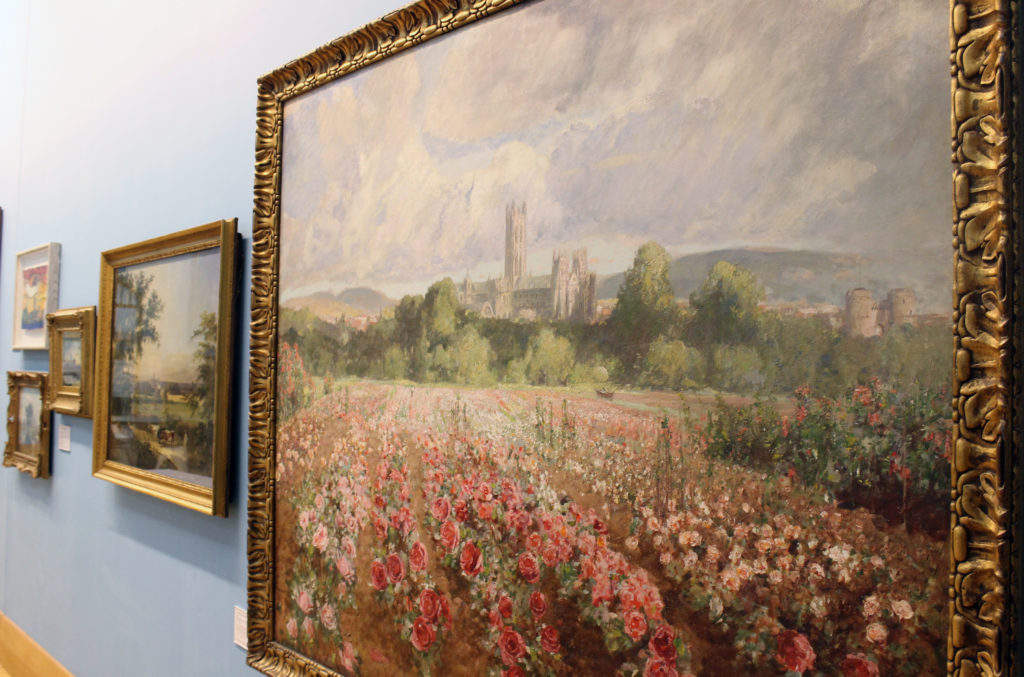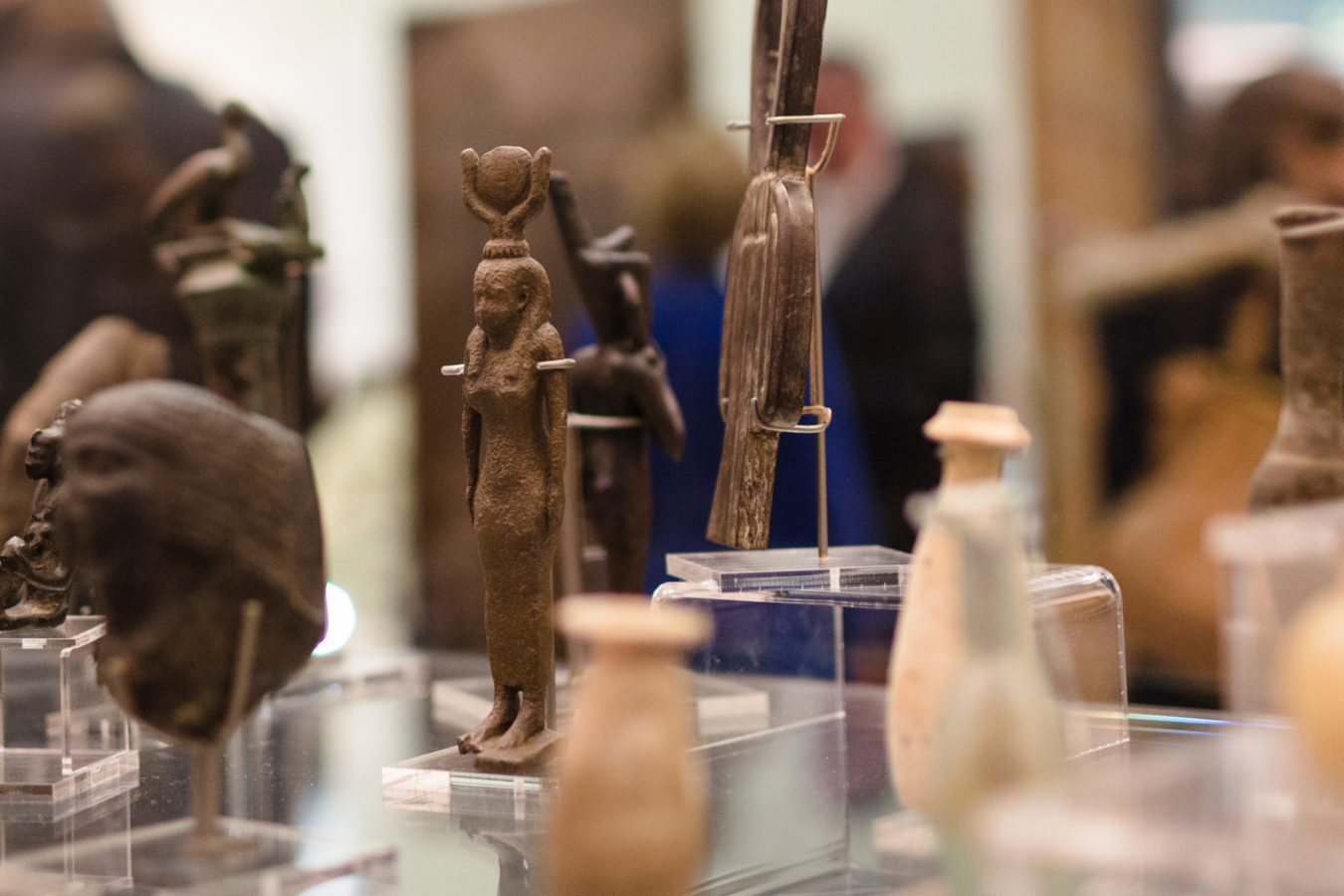
Easter fun at the museums!
Exhibitions, trails and activities; six fun things for all the family to enjoy at The Beaney and...
Considering the careful curation of the cabinets, designed to keep labelling to a minimum, there is plenty of text to be found on and around some of the objects. There are the faded museum labels and stickers of course, thinned to transparency in places, now aesthetic curios in their own right. Dense calligraphy in sepia and Delft-blue. Elegant printed block caps. There are memorial inscriptions, engraved dedications, embossed makers’ marks. Instructions and ingredients. Letters scraped and carved into Roman clay and stone. Artists’ marginalia too: notes on sketches, designations and titles on painted estates and portraits.
Then there is teasing text. Glimpses of lists and longer stories. A miniature notebook with mother-of-pearl cover, pages fanned to reveal the word Shoes in tiny pencilled script. What shoes? To be bought or worn? We can read about the giant trout landed at Fordwich, presented to Henry Lee in 1672. But the sign-writer is more interested in Henry Lee’s parliamentary career than in the trout. Where did this colossal fish end up – in Canterbury, Hindon, or back in the river?
A penknife boldly asserts itself as CURTIS’S IMPROVED. What it has improved upon remains unsaid.
Stained-glass fragments bring together an eclectic company: Lena Lang, van Valclenissen and Aristotle. Between them, snatches of Latin and Dutch, half-messages broken in the telling and lost in translation.
Most intriguing of all is the recycled text, the letters that should not be there. In the Materials and Masters room, amongst the glass objects, is a collection of painted Lantern Slides, ‘projected large by shining a light through the slides using an early form of projector’. The slides show hot air balloons, caricatures with bulbous noses, dancing dogs and duelling witches. But along the edges, between glass shelf and painted slide, printed words emerge.
ways on the Last and West Sides of the said R
Some of the text is upside down, some reflected, backwards. Much of it is obscured, worn away or smudged by handling.
the present buildings and yards of British Merchants at home
Peering closely, it becomes apparent that the text has nothing to do with the slides. There are snatches of legalese
the said former Act
said Justices
Someone has taken a tract, or a legal document, or perhaps a section of political newspaper, and chopped it up for a more appealing use. It this simply evidence of an innocent crafter’s upcycling? Or is there a message here, pointing to us across time, mocking the hot air and battling wits of the legal system?
Look twice at the cabinet text you find. What happens if you interrogate these lines, question the veracity of those labels?
With a little omission, a piece of Native Cloth from South Sea Islands could have been woven by the indigenous peoples of Sheerness. (See if you can find it).
That Stone Curlew looks pretty realistic.
In the cabinet of curiosities, a twig provides PROTECTIVE RESEMBLANCE.
An ancient green bottle proudly proclaims itself PROPERTY OF THE ROYAL MUSE.
There is a lump of London Clay – from Beltinge. It looks suspiciously like glass.
And what about that jar of desert sand? That’s what the label says, at least. Underneath, the words PRESTON SALTS strive to reveal themselves…
